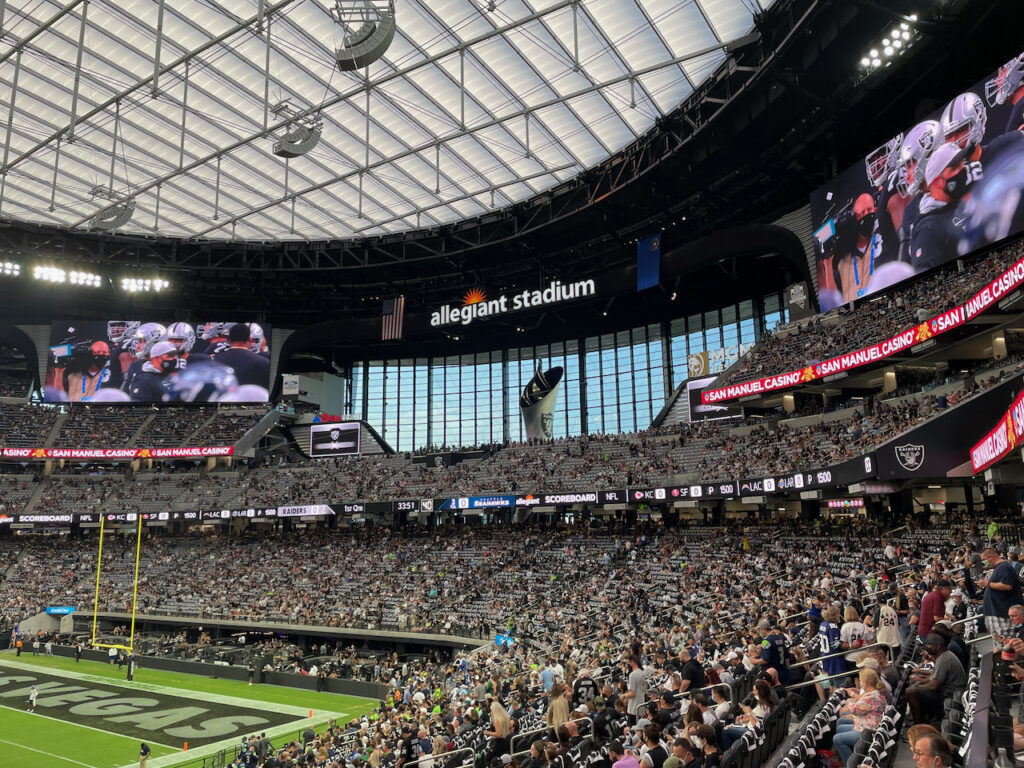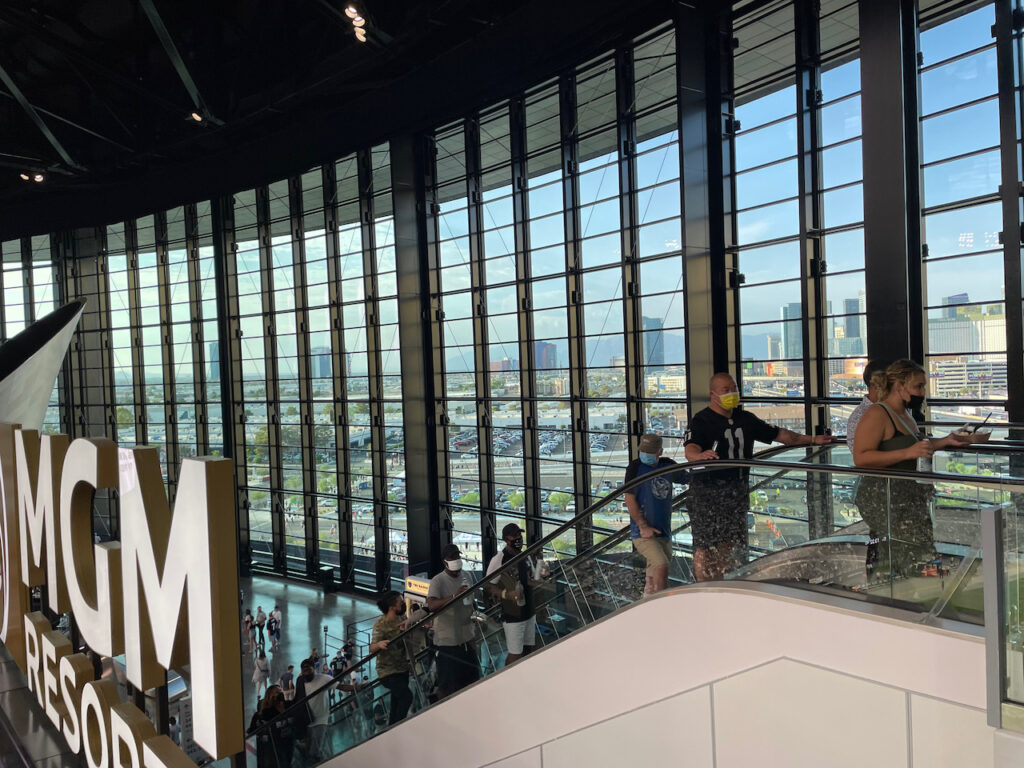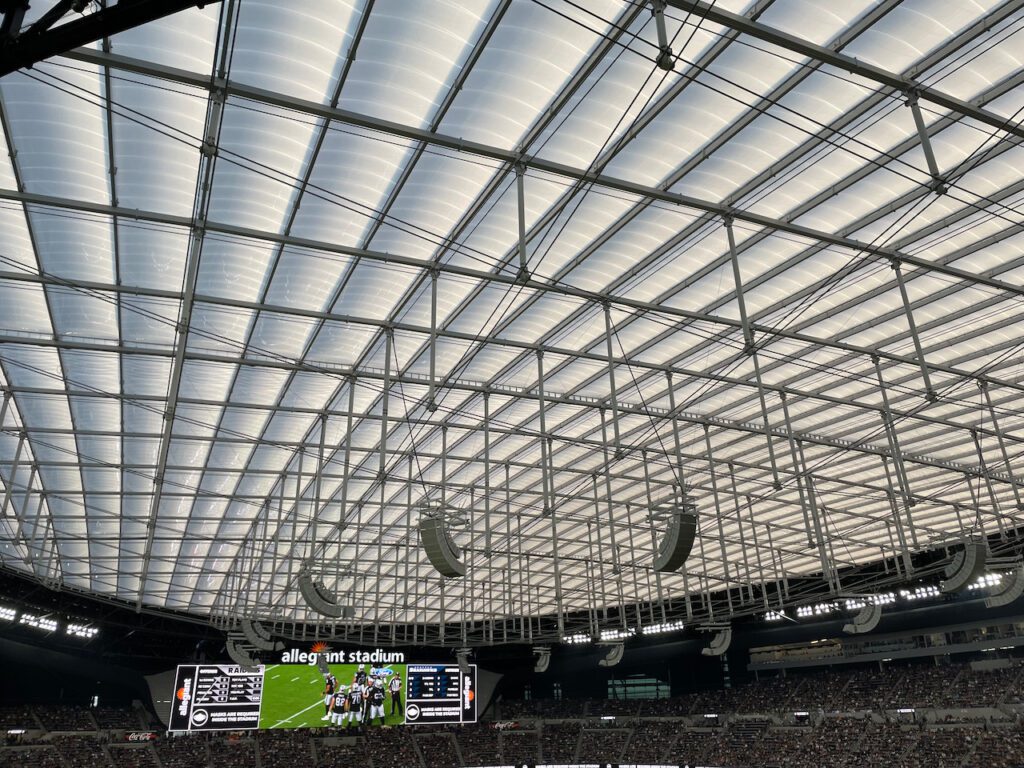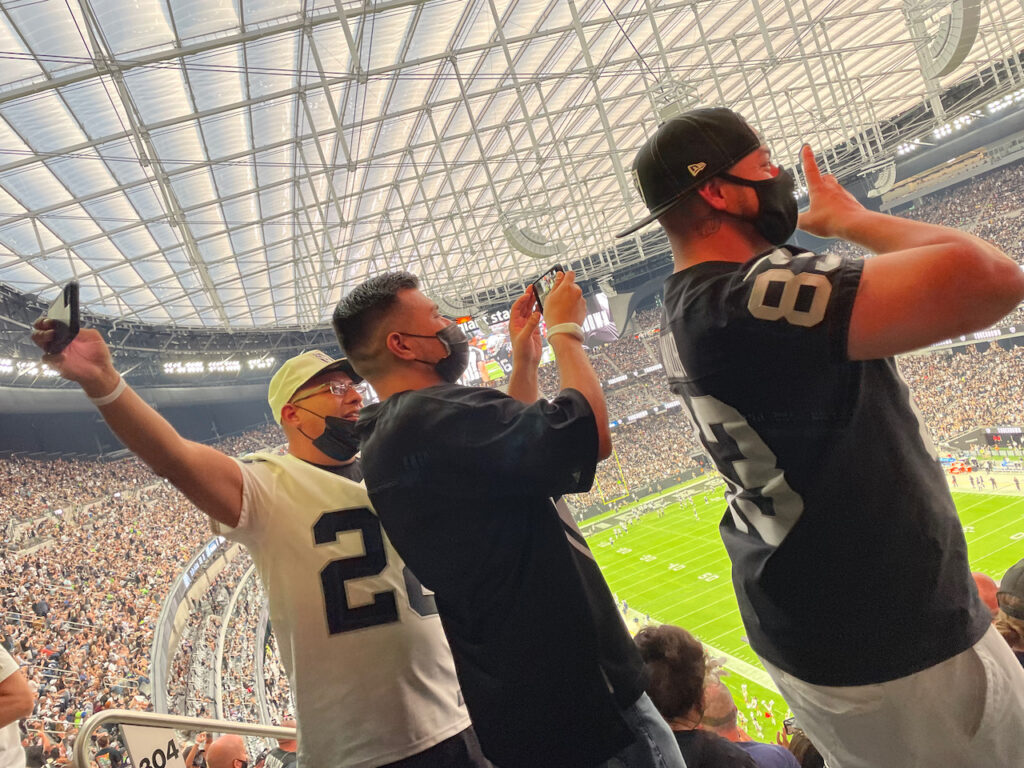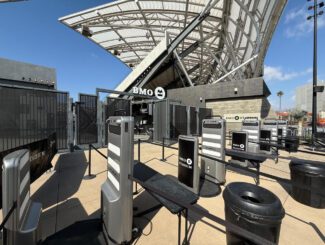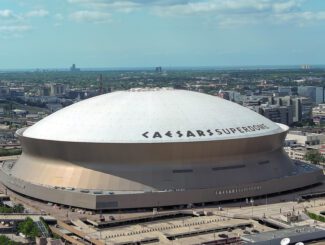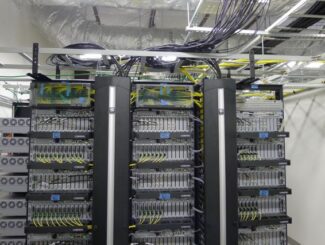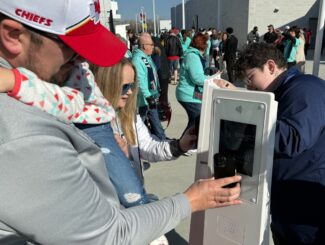If you’re a Raiders fan, you are probably ecstatic about the new place your team – the Las Vegas Raiders – can finally call home. And among all the amenities stuffed into Allegiant Stadium, a solid fan-facing Wi-Fi network stands out, delivering positive results from the first set of full-attendance events.

Though it’s been officially “open” for more than a year, the new home of the Raiders located just across the highway from the south end of the Las Vegas Strip wasn’t able to host full-attendance events last year due to the Covid-19 pandemic. But this summer as vaccinations helped beat back the infection rate, Allegiant Stadium was open for business, including the first Raiders game with fans, an Aug. 14 preseason event that Stadium Tech Report was on hand to watch.
What we found was good, solid Wi-Fi signals at many locations in and around the building, with some unexpectedly good marks in places tough to cover. While the Wi-Fi will probably only get better over time as the Raiders’ IT team has a chance to fine-tune it with fans in the stadium, it’s already part of an attractive package that should help keep the fan experience satisfying during the team’s inaugural season.
Experience, design, and a year of fine-tuning
Editor’s note: This column is part of our Stadium Tech Report Fall 2021 issue, which you can read through online or download for free right now! Coverage includes an in-depth profile of new entry technology at the Columbus Crew’s new Lower.com Field, and a look at some big videoboards at the swimming pool and sportsbook at Circa Las Vegas. Start reading today!
Last year, Allegiant Stadium opened for football games but was closed to fans. With a Wi-Fi 6 network using equipment from Cisco, and an extensive cellular distributed antenna system (DAS) deployment by DAS Group Professionals using gear from JMA Wireless and MatSing, integrated fiber and cable infrastructure from CommScope, backbone services from Cox Business/ Hospitality Network, digital displays from Samsung, and design and converged network planning directed by AmpThink, the Raiders used an all-star team of partners to reach the organization’s desire to provide what Raiders’ vice president of IT Matt Pasco calls “a top-notch fan experience.”
And so far this fall, while the team has done its part with two exciting overtime overtime home wins to open the season, the technology has also come through.
“We ran everything last year as if it were a full stadium,” Pasco said. “We did IPTV, video, and tested the Wi-Fi as well as you can without having bodies in the seats. We were able to get through a lot of the issues you get whenever you build something of this size.”
“Raiders fans deserve the world, and they finally have a home to call their own,” said Pasco, in a mid- game interview at the August preseason game. “I’m extremely proud of what we’ve done.”
According to Pasco the Raiders ran all the technology last year as if each game was a regular event, with fully lit networks and programs for audio and visual components. Doing so allowed the Raiders to do a lot of fine-tuning that is always necessary whenever you launch a technology-filled stadium.
And the fine-tuning paid off. Our speedtests during our visit showed good coverage in many locations, with Wi-Fi speeds above 30 Mbps for download outside the main entry gates, a mark of 68.4 Mbps down / 83.9 Mbps up in a club area, and 46.8 Mbps / 58.5 Mbps on the upper concourse.
“We ran everything last year as if it were a full stadium,” Pasco said. “We did IPTV, video, and tested the Wi-Fi as well as you can without having bodies in the seats. We were able to get through a lot of the issues you get whenever you build something of this size.”
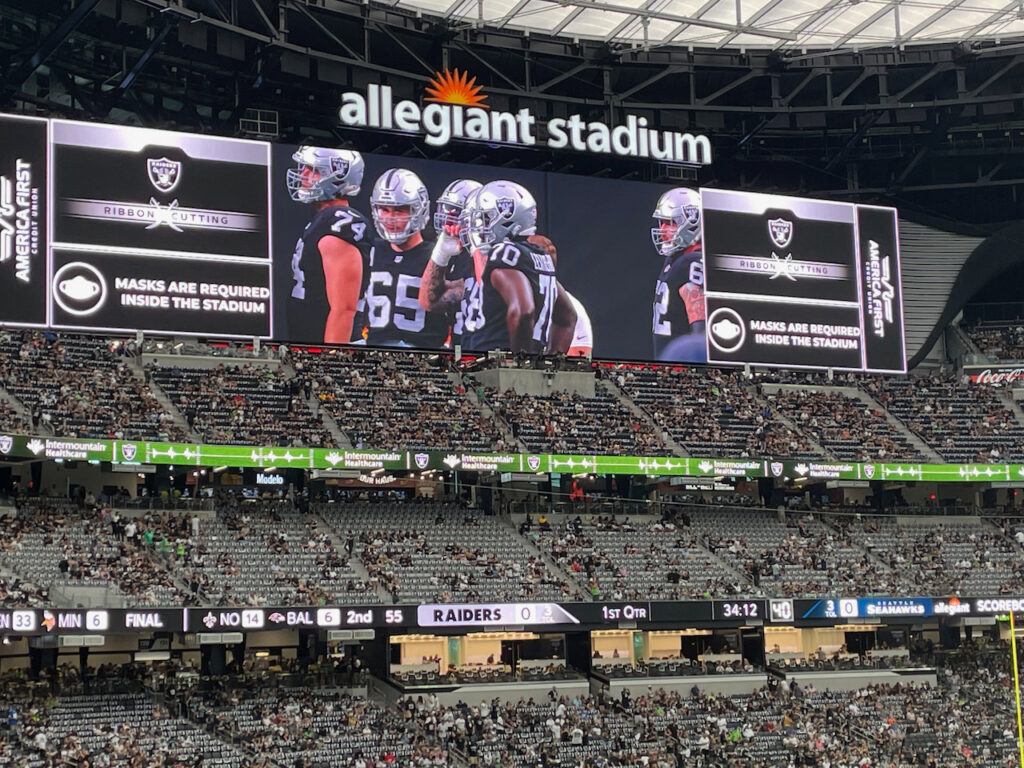
New wireless technology helps overcome construction challenges
Pasco and the Raiders also took advantage of the extra time before fans attended games at Allegiant Stadium to integrate some cutting-edge technology from Cisco, the company’s new Catalyst 9104 Wi-Fi antennas, which have a much greater reach capability, able to reach client devices more than 100 feet away from the antenna.
Allegiant Stadium was the first place the new Cisco gear was installed, and in one location the technology was a perfect answer for a construction problem. One of the hallmarks of the building is the north main-concourse “peristyle” area, where the LED Torch that honors former Raiders owner and coach Al Davis is the central focus of a wide-open space where fans can gather.
With no seats above the Torch and windows that can open to the outside on one side, the space is alluring and attractive – and a complete headache for wireless coverage, since the closest spot for antenna mounts for Wi-Fi or cellular is way up on the roof structure, some 90-plus feet above the floor.
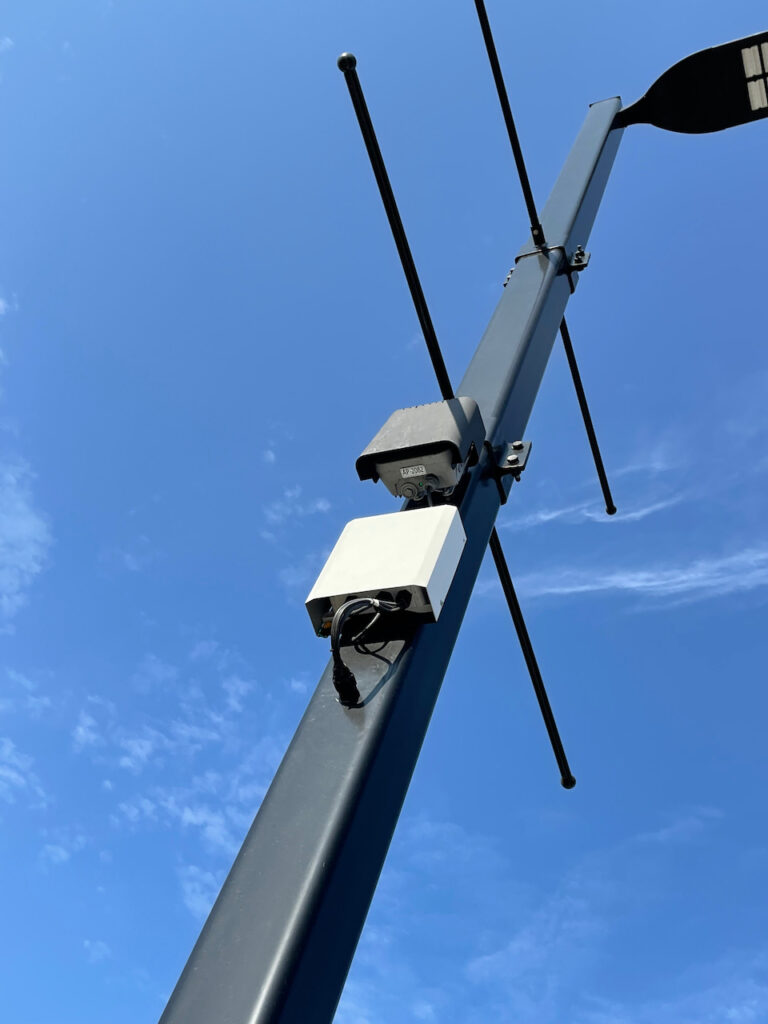
“I asked about putting some Wi-Fi antennas on the Torch but got ‘no’ for an answer,” Pasco said, laughing.
Instead, the Raiders turned to two new developments in wireless technology to provide the coverage they needed. On the cellular side, Allegiant Stadium installed several MatSing Lens antennas directly over the torch. With their patented “ball” shapes and ability to focus tight beams of coverage that can extend much farther than regular cellular antennas, the MatSings were a perfect fit for the stadiums’ DAS. (MatSing antennas proved to be so useful that the Raiders ended up installing 27 of them throughout the building.)
And during the past summer when the new Cisco Wi-Fi antennas became available the stadium installed some of those above the peristyle area. During our conversation with Pasco, Stadium Tech Report was able to get a Wi-Fi speedtest of 62.4 Mbps on the download and 66.1 Mbps on the upload while standing right next to the torch, pretty good proof that the new Cisco gear was delivering as promised.
Statistics provided by Pasco’s office show the Raiders recording 15.66 terabytes of Wi-Fi data for their season-opening Monday Night Football game against the Baltimore Ravens on Sept. 13. That followed a total-tonnage Wi-Fi mark of 11.75 TB during a wrestling event on Aug. 21 and just more than 9 TB during a college game on Sept. 4.
Addressing challenges is part of the business
The stadium’s public start has not been without its hiccups – during the wrestling event the building was unable to process any concession transactions for several hours due to a national outage issue that affected one of the stadium’s payment-processing services. While the issue wasn’t with any of the systems controlled by the Raiders, the team still had to deal with the fans in the building and compensated by giving away food and beverages during the outage.
The Raiders also seem to be especially responsive to solving other issues that inevitably crop up when you open a facility of the size of Allegiant Stadium in an urban area, including tweaking parking and traffic patterns to help streamline the flow of fans into the building on game days. During our visit the Raiders helped alleviate the 100-degree afternoon heat by providing cool-air misters in many locations outside the entry gates. Inside, the stadium was cool and comfortable, affirming the team’s decision to build a domed building in the desert.
Technology also played a role in supporting a smooth operation of the Raiders’ requirement that all fans attending events show proof of a Covid-19 vaccination, as a partnership with Clear provided an easy-to-use app that allowed fans to scan their vaccination cards. The Raiders also set up tents in the Allegiant Stadium parking lots and opened them a few days before the first regular-season game so that fans could either provide proof of vaccination or even get a free vaccine shot well before game day or game time. (The Raiders have continued the pre-game service for the following home games as the season goes on.)
“Having this building finally open to our fans is really rewarding,” Pasco said. “I’m super proud of what’s been built.”
